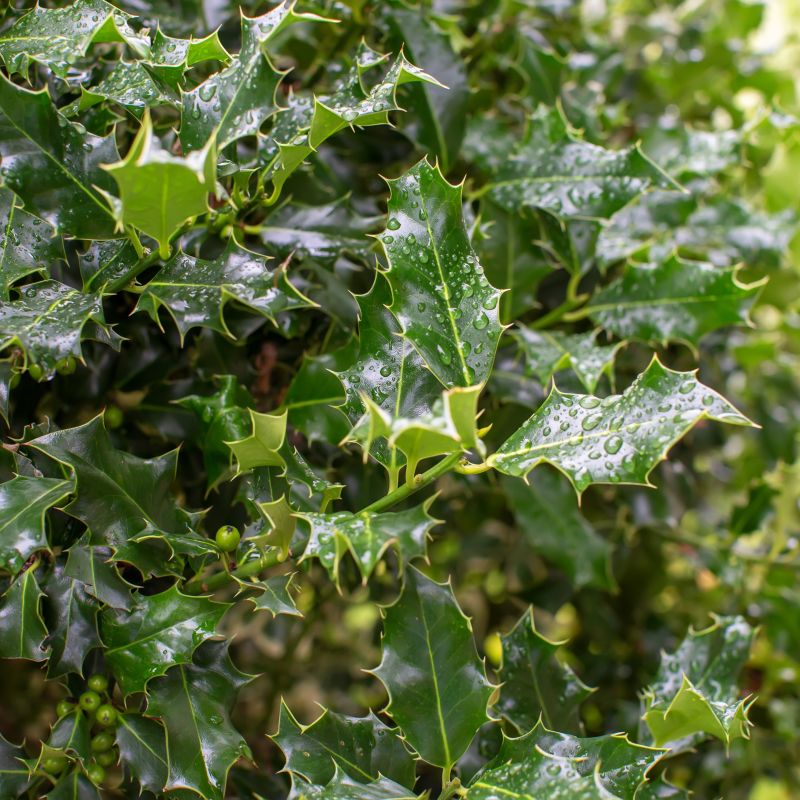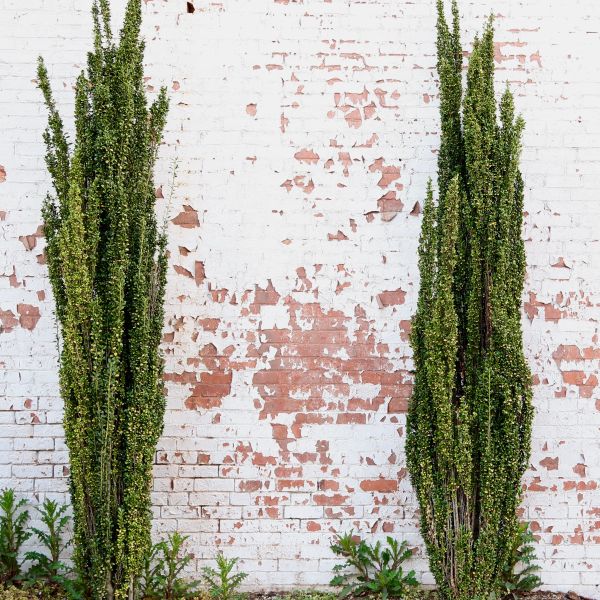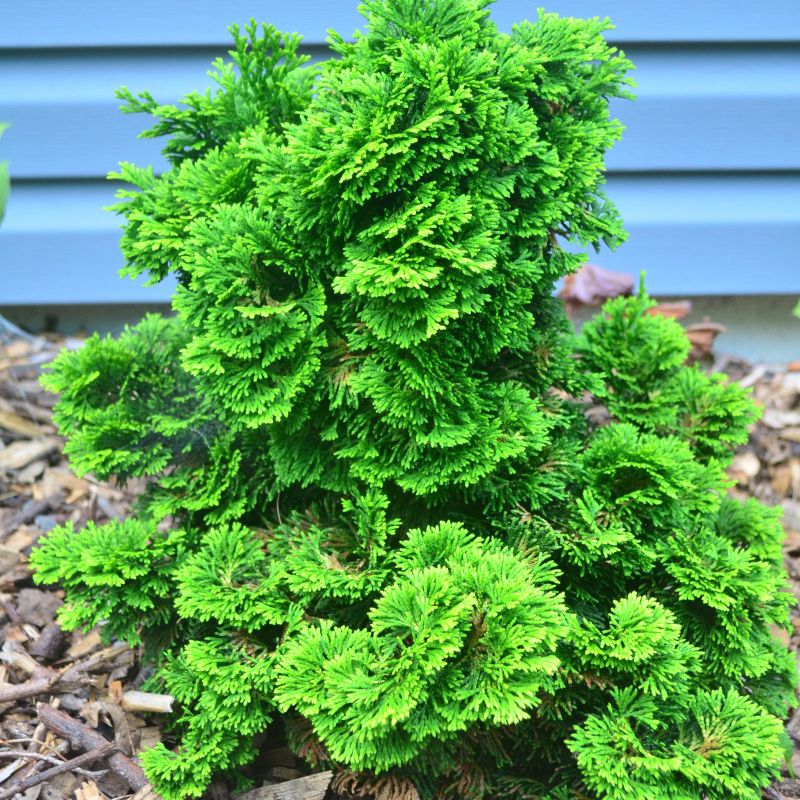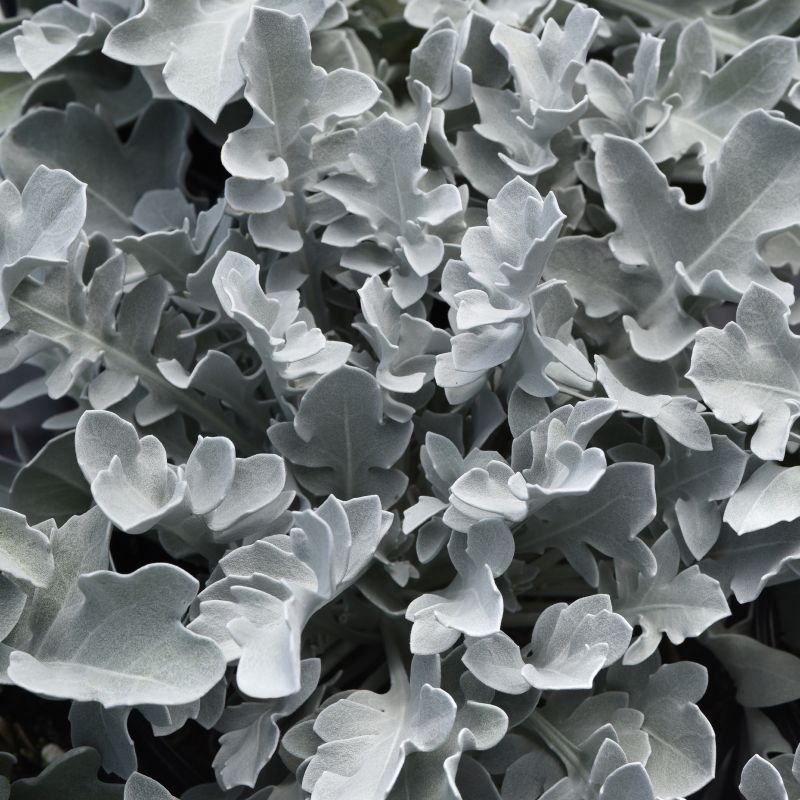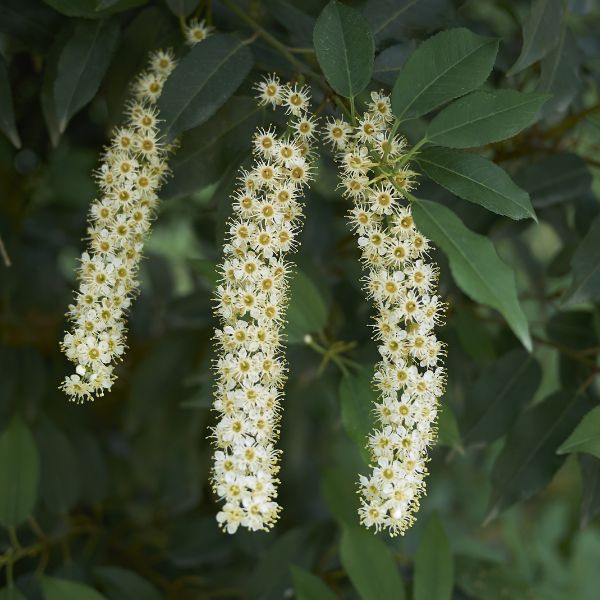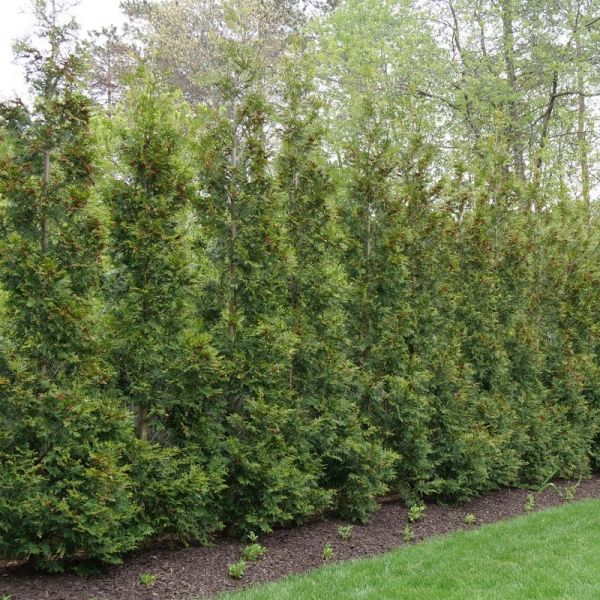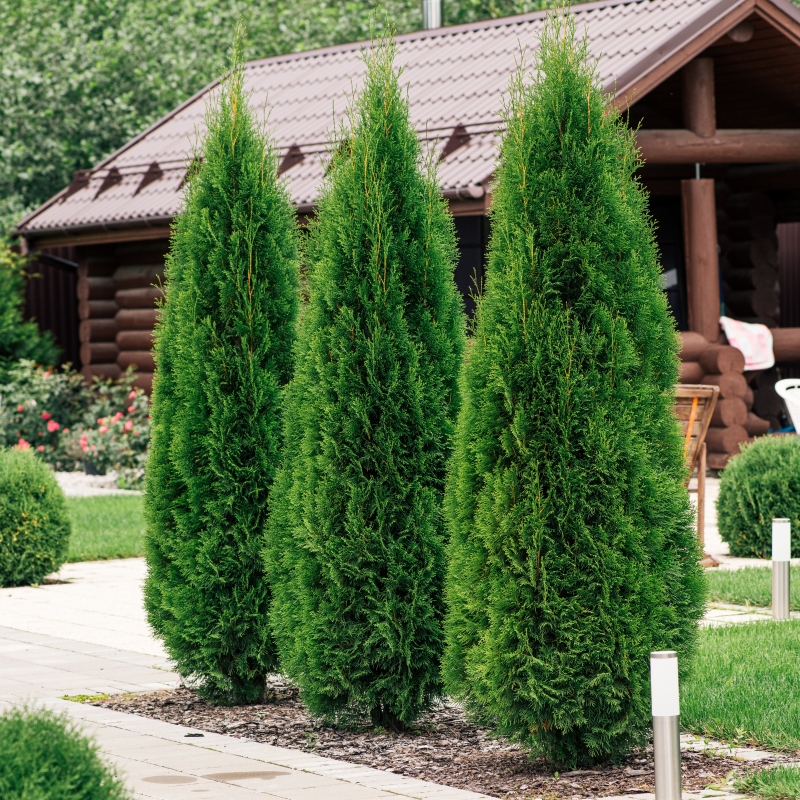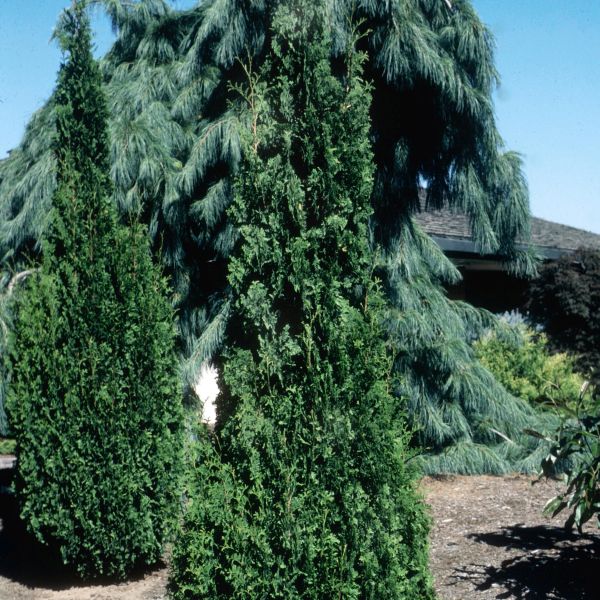
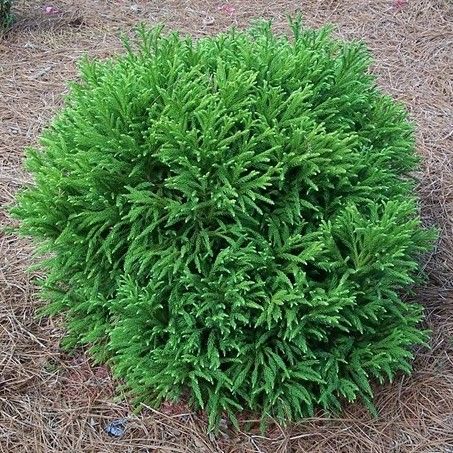
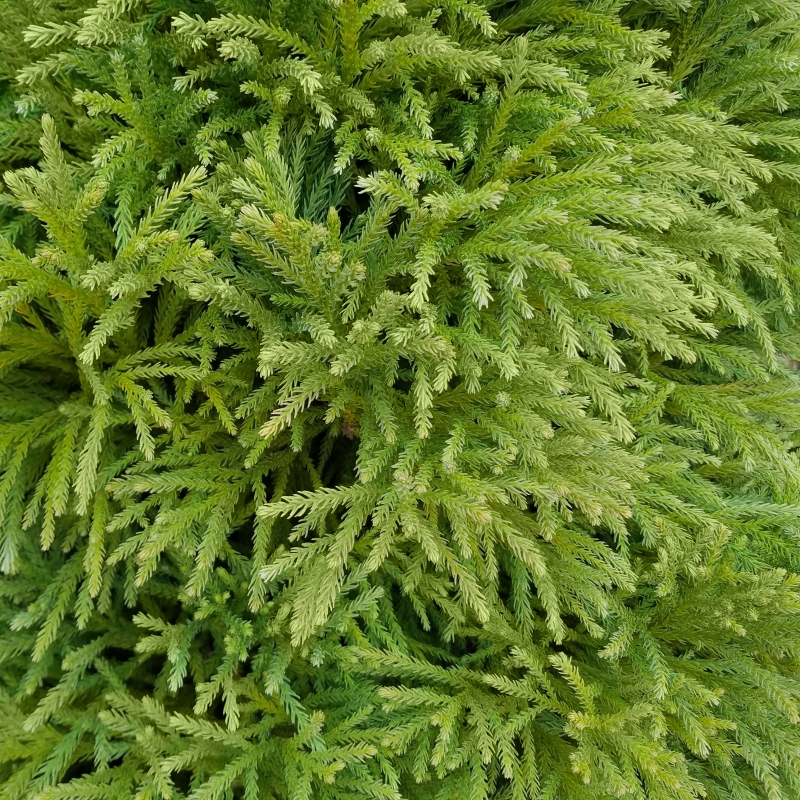
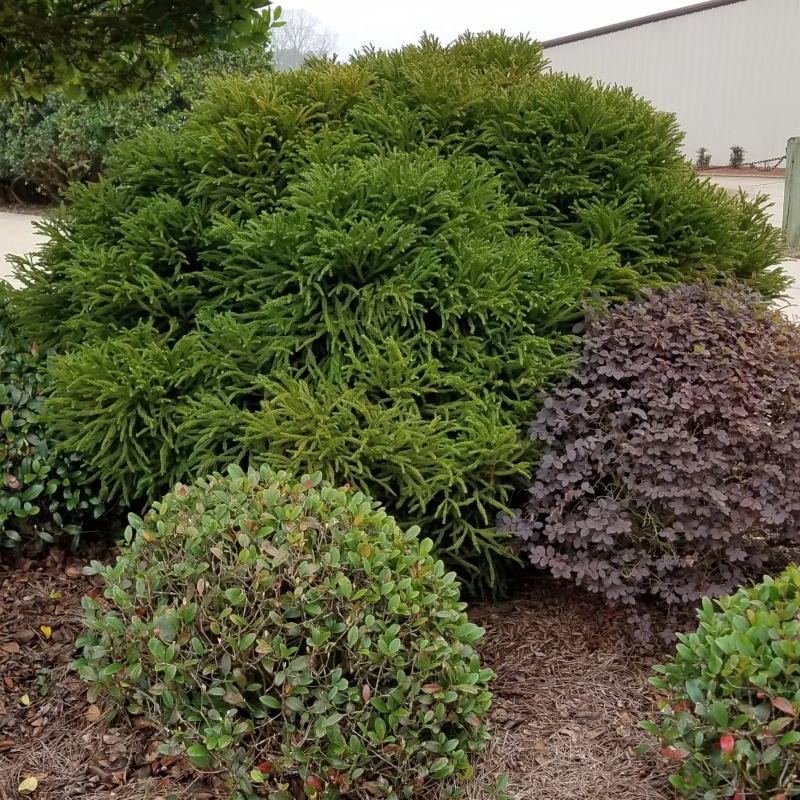
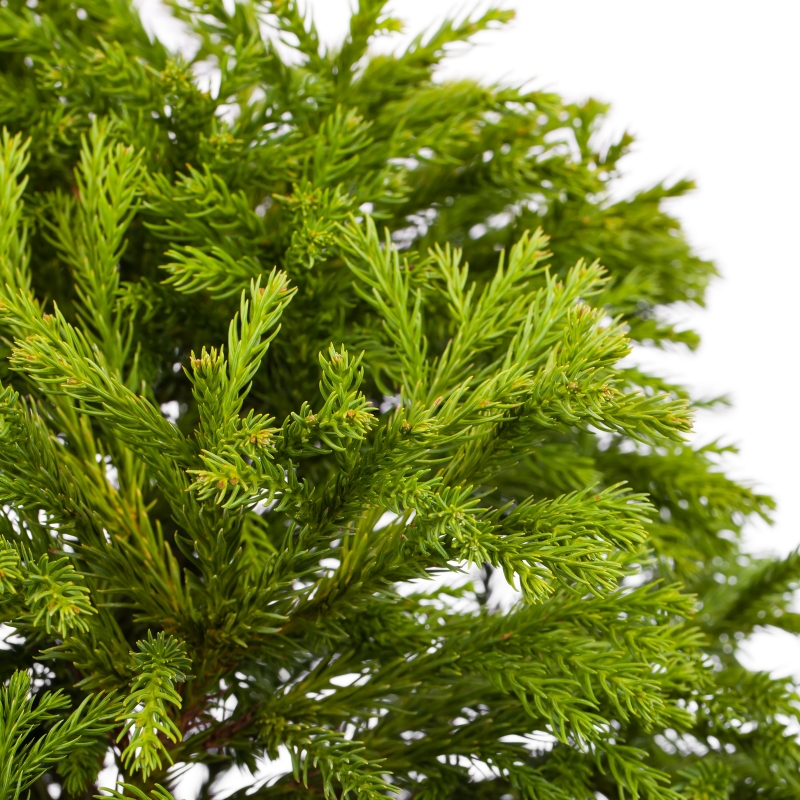

Dwarf Japanese Cedar
Cryptomeria japonica 'Globosa Nana'
19 reviews
Dwarf Japanese Cedar
Cryptomeria japonica 'Globosa Nana'
19 reviews
- Low maintenance plant
- Unique texture and color make it a standout in the garden
- Perfect for small gardens or landscapes
$170.00
$243.00
30% Off
- Ships to 43215 in 3 to 7 days
- Free Shipping
- Plant Arrival Guarantee
- In Stock
- Free Plant Consult
$200
- 6 Gallon 1-2 Feet
- 1 Gallon
- 2.5 Gallon
Why Dwarf Japanese Cedar?
Dwarf Japanese Cedar is a popular ornamental plant due to its compact, bushy growth habit and attractive deep green foliage. It is relatively low-maintenance, requiring minimal pruning or shearing to maintain its shape. This variety is ideal for small gardens, bordering pathways, or as a low hedge plant. Additionally, it can be grown in containers and placed on patios or balconies. Dwarf Japanese Cedar is also tolerant of heat and drought, making it a suitable plant for many climates.
People who loved this plant also bought
Sunlight
Dwarf Japanese Cedar requires full to partial sunlight, ideally receiving 4 to 6 hours of direct sunlight per day to thrive and maintain its compact form.
Watering
Dwarf Japanese Cedar requires regular watering during its first year of planting to establish a strong root system. Afterward, it is drought-tolerant and requires less frequent watering, only during prolonged dry periods or if the soil becomes very dry.
Fertilizing
The fertilizer requirement for Dwarf Japanese Cedar is typically minimal, as these trees do not have high nutrient needs. It is recommended to use a slow-release fertilizer with a balanced NPK ratio, applied in early spring or late summer.
The Dwarf Japanese Cedar is a slow-growing and compact evergreen tree that is prized for its unique texture, bright green foliage, and easy-to-grow nature. This cultivar is a great choice for adding year-round interest to the landscape, and it is ideal for small gardens and containers.
The Dwarf Japanese Cedar is a slow-growing and compact evergreen tree that is prized for its unique texture, bright green foliage, and easy-to-grow nature. This cultivar is a great choice for adding year-round interest to the landscape, and it is ideal for small gardens and containers.
Dwarf Japanese Cedar is adaptable to a wide range of growing conditions, including full sun to partial shade and a variety of soil types. They prefer well-drained soil that is rich in organic matter, and they benefit from regular fertilization to promote healthy growth.
This tree is a small and compact cultivar that typically reaches heights of up to 3-5 feet tall and 2-3 feet wide. It has a unique, mounding shape that makes it a great choice for adding texture and interest to the garden.
Dwarf Japanese Cedar has attractive, bright green foliage that provides a striking contrast to other plants in the garden. The foliage is arranged in a unique, scale-like pattern along the stems, giving the tree a full and lush appearance.
The Dwarf Japanese Cedar's evergreen nature not only makes it a sight to behold in the summer, but also in the winter. Its glossy green leaves remain throughout the winter, giving your garden year-round vibrancy.
When properly placed, a Dwarf Japanese Cedar instantly becomes the focal point of any garden. They give year-round interest and texture to the landscape and are simple to maintain and adaptable to a variety of growth environments. The fact that they grow slowly makes them great for contained environments.
Plant Information:
| Botanical Name: | Cryptomeria japonica 'Globosa Nana' |
| USDA Zones: | 5 - 9 |
| Water: | Moderate |
| Exposure: | Full Sun |
| Soil Needs: | Well-Drained |
| Mature Height: | 4 - 8 feet |
| Mature Spread: | 4 - 5 feet |






Pollination Info
Pollination Information for Dwarf Japanese Cedar (Cryptomeria japonica 'Globosa Nana')
The Dwarf Japanese Cedar (Cryptomeria japonica 'Globosa Nana') is a cultivated variety of the Japanese Cedar tree and is a popular ornamental plant due to its low-growing habit and interesting foliage.
However, the Dwarf Japanese Cedar is a dioecious plant, meaning that it has male and female reproductive organs on separate trees, and therefore requires cross-pollination to produce seeds and propagate.
The male tree produces small, brownish-red cones that release pollen in the late winter and early spring. The female tree produces larger, greenish-blue cones that contain ovules and are receptive to pollen during the same time period.
Therefore, for successful pollination and seed production, it is necessary to plant both male and female trees within close proximity to each other, so that the pollen can be carried by insects or wind to the female cones.
The Dwarf Japanese Cedar is also known to hybridize with other Cryptomeria japonica cultivars, which can result in interesting variations in foliage and growth habit, but may also affect the viability of the seeds produced.
FAQ
Dwarf Japanese Cedar (Cryptomeria japonica 'Globosa Nana') - FAQ
What is a Dwarf Japanese Cedar?
A Dwarf Japanese Cedar is a slow-growing evergreen shrub that is native to Japan. It has a compact, round shape and can reach a maximum height of around 6-8 feet. It is a popular garden plant because of its attractive appearance and low maintenance needs.
What are the growing requirements for Dwarf Japanese Cedar?
Dwarf Japanese Cedar grows best in well-draining soil that is rich in organic matter. It prefers full sun or partial shade and is a hardy plant that tolerates a range of temperatures, from -10 to 40 degrees Fahrenheit. It is important to keep the soil regularly moist but not too wet, as overwatering can lead to root rot.
How do I plant Dwarf Japanese Cedar?
To plant Dwarf Japanese Cedar, dig a hole that is slightly wider than the root ball and about as deep as the container. Loosen the soil in the bottom of the hole and mix in some compost or other organic matter. Gently remove the plant from its container and place it in the hole, making sure that the top of the root ball is level with the soil surface. Backfill the hole with soil and water well.
How often should I water Dwarf Japanese Cedar?
Dwarf Japanese Cedar should be watered regularly, especially during hot and dry periods. It is important to keep the soil moist but not waterlogged, as excessive moisture can cause the roots to rot. Water deeply once a week or as needed, depending on the weather and soil conditions.
How often should I fertilize Dwarf Japanese Cedar?
Dwarf Japanese Cedar does not require heavy fertilization, but it can benefit from a light feeding in the spring. Use a balanced, slow-release fertilizer and apply according to the package instructions. Avoid fertilizing in the fall or winter, as this can promote new growth that may not have time to harden off before the cold weather arrives.
How do I prune Dwarf Japanese Cedar?
Dwarf Japanese Cedar does not require much pruning, but it can be shaped or trimmed back if desired. Prune in the late winter or early spring before new growth begins. Use sharp, clean tools and make cuts just above a growth node. Avoid cutting into bare wood, as this can damage the plant and promote disease.
How do I propagate Dwarf Japanese Cedar?
Dwarf Japanese Cedar can be propagated from cuttings taken in the summer or fall. Take a 4-6 inch cutting from a healthy branch and remove the lower leaves. Dip the cut end in rooting hormone and plant in a pot filled with a mixture of damp sand and peat moss. Place the pot in a bright but shaded location and keep the soil moist. The cutting should root in 2-3 weeks. Transplant to a larger pot or into the garden once the roots have filled the container.
Planting & Care
Planting Dwarf Japanese Cedar
- Choose a location that receives full sun to partial shade.
- Ensure the soil is well-draining and slightly acidic.
- Dig a hole that is twice as wide and just as deep as the root ball.
- Carefully remove the plant from its container and gently loosen the roots.
- Place the plant in the hole and backfill with soil, gently tamping down as you go.
- Water thoroughly to settle the soil and remove any air pockets.
- Add a layer of mulch around the base of the plant to retain moisture and suppress weeds.
Caring for Dwarf Japanese Cedar
- Water regularly during the first growing season to establish a strong root system.
- After establishment, water deeply but infrequently, allowing the soil to dry out slightly between waterings.
- Fertilize in early spring with a balanced, slow-release fertilizer.
- Prune lightly in early spring to maintain shape and remove any dead or damaged branches.
- Protect from harsh winter winds and heavy snow with burlap or other protective coverings.
- Monitor for any pests or diseases and treat as needed.
Check Out These Verified Customer Reviews:
Customer Reviews
4.6 out of 5 based on 19 reviews
Thank you! Your review has been submitted.
Lovely addition to my garden
Very pleased with the overall experience
Thrilled with my purchase, will buy again
Item has been added to your cart.





